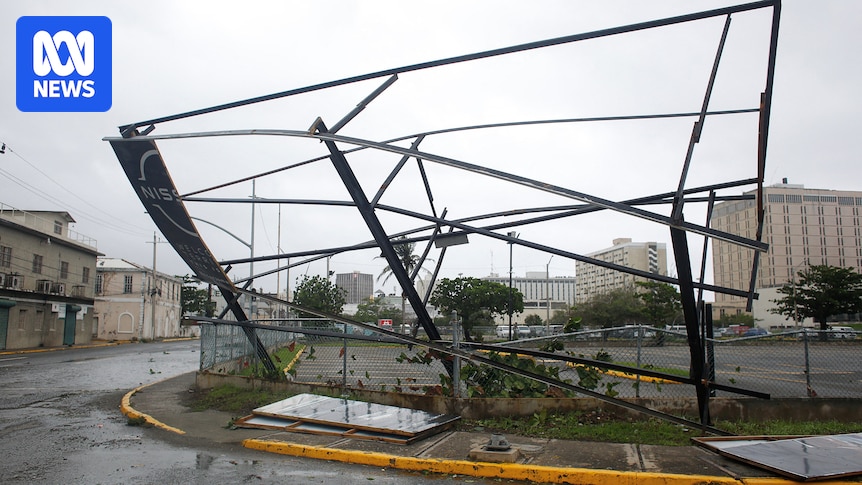Hurricane Melissa has made landfall in western Jamaica as a powerful category five storm.
It is the strongest storm recorded to directly hit the Caribbean nation of 2.8 million people.
Melissa made landfall on Tuesday, local time, near the town of New Hope, 62 kilometres south of Montego Bay.
It was packing maximum sustained winds of 298 kilometres per hour, the US National Hurricane Center said in an advisory.
By 3pm local time it had weakened slightly to 258kph, the NHC said, but remained a category five storm, the most powerful level on the Saffir-Simpson scale.
Follow our ABC News live blog as Hurricane Melissa crosses nations in the Caribbean.
The slow-moving storm is forecast to remain a powerful hurricane as it crosses the mountainous island, with highland communities that are vulnerable to landslides and flooding.
The storm is expected to head towards Santiago de Cuba, Cuba’s second-largest city.
The Miami-based hurricane centre warned that “total structural failure” was likely in Melissa’s path.
Residents in Jamaica battened down ahead of the arrival of Hurricane Melissa. (AP: Matias Delacroix)
“The destruction could be unlike anything people in Jamaica have seen before,” US forecaster AccuWeather’s lead hurricane expert Alex DaSilva said.
“The island has never taken a direct hit from a category four or a category five hurricane in recorded history.”
Melissa is the third-most intense hurricane observed in the Caribbean after Wilma in 2005 and Gilbert in 1988.
Climate crisis frustration
Colin Bogle, a local adviser to aid group Mercy Corps in Portmore, near Jamaica’s capital, said he heard a loud explosion in the morning then everything went dark.
Sheltering with his grandmother, he reported hearing relentless noise and saw trees violently tossed in the wind.
Hurricane Melissa moved north in the Caribbean Sea towards Jamaica and Cuba. (Reuters/CIRA/NOAA)
“People are scared. Memories of Hurricane Gilbert run deep, and there is frustration that Jamaica continues to face the worst consequences of a climate crisis we did not cause,” he said.
“Food aid will be needed, but recovery support like seeds, tools and repairs for vehicles will be just as critical to help people restore their livelihoods.”
Shortly before the hurricane made landfall, Jamaican electric utility JPS said power outages had affected more than a third of its customers.
In its worst-hit parishes, three-quarters of customers lost power, JPS said.
Hurricane Melissa hits Jamaica as trees block a road in Gordon Town. (Reuters: Gilbert Bellamy)
Local Government Minister Desmond McKenzie told reporters that nearly 6,000 people had moved into temporary shelters.
The government had issued mandatory evacuation orders for about 28,000 people, but some were reluctant to leave their homes.
“We’re getting videos and pictures of severely damaged public infrastructure — hospitals, places of safety … so it is having the effect that was projected,” Jamaican Environment Minister Matthew Samuda told CNN.
“We are happy that there is some weakening, but 165 miles per hour (266kph) — that is still a catastrophe,” he said, noting that 70 per cent of the population lived within 5km of the ocean.
People take shelter in a school as Hurricane Melissa hits Jamaica. (AP: Matias Delacroix)
In Portland Cottage, 150km south-east of where Melissa made landfall, 64-year-old retiree Collin Henry McDonald told Reuters his community was seeing strong rain and winds, but his concrete roof was holding steady.
“It’s like a roaring lion. It’s mad. Really mad,” he said.
Health authorities in south-eastern Jamaica have warned residents to watch out for crocodiles that could be displaced from swamps and rivers and come into residential areas in search of dry land.
Reuters

